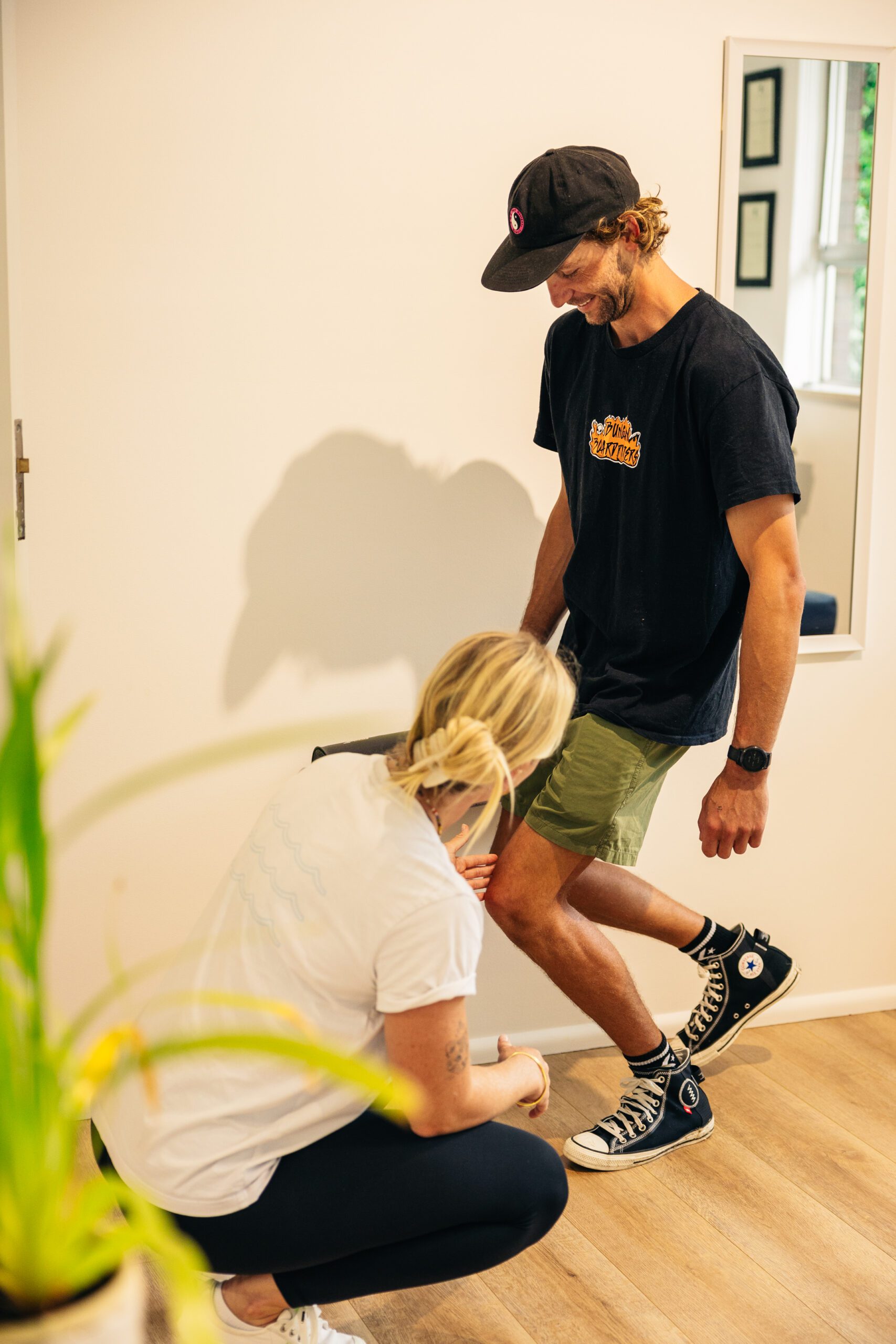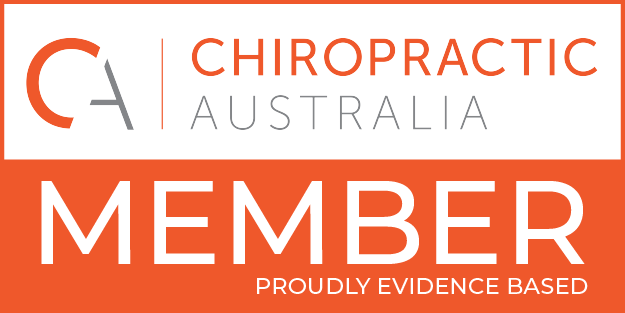When it comes to a rotator cuff tear, one of the most common questions patients and healthcare providers grapple with is: should we opt for shoulder surgery or stick with conservative care (chiropractic/physiotherapy/massage/osteopathy)? The answer can be more complex and depends on various factors, including the severity of the tear, patient preferences, and long-term goals. Let’s dive into the current recommendations and evidence to help guide this decision.
First off, let’s break down what a rotator cuff tear means
A rotator cuff tear is damage to the tendons and muscles that stabilise the shoulder joint. These tears can be traumatic (caused by an injury) or degenerative (resulting from wear and tear over time). Symptoms can include pain, weakness, and limited range of motion, however, some individuals may have a tear in their rotator cuff without any significant symptoms. Research suggests the most commonly torn tendon is the supraspinatus tendon 70 – 85% of the time.
Do I have to go under the knife?
Many people believe that a rotator cuff tear means either undergoing surgery or living a life of pain and disability. Realistically this isn’t true. Rotator cuff tears are common and should be seen as a normal part of aging, like wrinkles and grey hair. Research shows that rotator cuff tears can be present without causing any symptoms, especially in individuals over 50. One study found that if you are over the age of 50, a rotator cuff tear seen on a scan is twice as likely not to cause symptoms, and this increases to four times as likely by the age of 80.
Progressions vs. Stability
Research suggests that roughly 50% of rotator cuff tears progress in size over 5 years, full thickness tears are more likely to progress in size when compared to partial thickness tears. Partial tears are relatively stable in the short to intermediate term. There is a growing body of evidence to suggest that small full-thickness tears can remain stable and even heal over 3 – 4 years. Tear progression is shown to be negatively impacted by the following things:
- Smoking
- Demanding physical work
- Diabetes
- Increased weight
- To some degree non-modifiable risk factors such as age and gender
Another common misconception regarding rotator cuff tears is the way these tears look. Many people believe all tendons are thick rope-like structures at the end of all our muscles, while this is true for some tendons, like those in our forearms and biceps, it is not true for all tendons. In reality, tendons vary in shape and structure, and some are a lot flatter, broader and thicker than others, like those of the rotator cuff. The rotator cuff tendons form a broad, continuous structure around the shoulder joint.
This is where a helpful analogy to explain rotator cuff tears plays a role, which is the “hole in a blanket”. Because the tendon is so thick and broad, when a tear occurs, it is like a hole in a large blanket. Just because there is a hole, it doesn’t mean the rest of the blanket is useless. This analogy helps to visualise and understand that the rest of your tendon can still function well, and can be strengthened without creating further damage.
Now let’s compare conservative care and surgery
Conservative care includes chiropractic care, physiotherapy, osteopathy, exercise physiology, or any other allied health practitioners who can help with your injury without operating on you. At Pittwater Chiro, our treatment would involve a blend of hands-on techniques to assist with pain reduction alongside at-home pain management strategies, exercise prescription to help strengthen the rotator cuff and its surrounding muscles, advice on temporary modifications to work, sports or hobbies which may be aggravating the pain, and advice on how to return to your normal activities in the future. The hands-on treatment we provide can include massage and other soft tissue release techniques, joint mobilisations and manipulations, shockwave therapy, dry needling, and cupping
Shoulder surgery is usually considered when conservative care fails to provide adequate relief or when the tear is severe. Surgical options include:
- Arthroscopic Surgery: Minimally invasive surgery using small incisions and a camera to repair the tear.
- Open Surgery: More extensive surgery for larger tears or when additional repair is needed.
- Mini-Open Repair: Combines both techniques for moderate tears.
Rotator Cuff Tear Summary
When considering if surgery can alter the progression of a rotator cuff tear, research has found that surgery does not change the underlying tendon biology which causes the rotator cuff to tear. Therefore, the likelihood of recurrent symptoms and poor functioning of the rotator cuff following surgery can be similar to the likelihood of progression without surgery.
Research also suggests that the traumatic onset of a rotator cuff tear is not a sufficient reason to choose surgery over non-operative care. Regardless of whether your tear is non-traumatic or traumatic onset, the first line of care for anyone with partial or full-thickness tears according to the evidence is a period of non-surgical conservative care. For those suffering from a non-traumatic partial or full-thickness tear, individuals benefit from activity modification, chiropractic care, and therapeutic exercise, and if this fails then there is the consideration for a corticosteroid injection.
References
A
- Bedi A, Bishop J, Keener J, Lansdown DA, Levy O, MacDonald P, Maffulli N, Oh JH, Sabesan VJ, Sanchez-Sotelo J, Williams RJ 3rd, Feeley BT. Rotator cuff tears. Nat Rev Dis Primers. 2024 Feb 8;10(1):8. doi: 10.1038/s41572-024-00492-3. PMID: 38332156.
- Fucentese SF, von Roll AL, Pfirrmann CW, Gerber C, Jost B. Evolution of nonoperatively treated symptomatic isolated full-thickness supraspinatus tears. J Bone Joint Surg Am. 2012 May 2;94(9):801-8. doi: 10.2106/JBJS.I.01286. PMID: 22552669.
- Chalmers PN, Ross H, Granger E, Presson AP, Zhang C, Tashjian RZ. The Effect of Rotator Cuff Repair on Natural History: A Systematic Review of Intermediate to Long-Term Outcomes. JB JS Open Access. 2018 Feb 9;3(1):e0043. doi: 10.2106/JBJS.OA.17.00043. PMID: 30229235; PMCID: PMC6132904.
- Ranebo MC, Björnsson Hallgren HC, Holmgren T, Adolfsson LE. Surgery and physiotherapy were both successful in the treatment of small, acute, traumatic rotator cuff tears: a prospective randomized trial. J Shoulder Elbow Surg. 2020 Mar;29(3):459-470. doi: 10.1016/j.jse.2019.10.013. Epub 2020 Jan 7. PMID: 31924516.
- Kuhn JE, Dunn WR, Sanders R, An Q, Baumgarten KM, Bishop JY, Brophy RH, Carey JL, Holloway BG, Jones GL, Ma CB, Marx RG, McCarty EC, Poddar SK, Smith MV, Spencer EE, Vidal AF, Wolf BR, Wright RW; MOON Shoulder Group. Effectiveness of physical therapy in treating atraumatic full-thickness rotator cuff tears: a multicenter prospective cohort study. J Shoulder Elbow Surg. 2013 Oct;22(10):1371-9. doi: 10.1016/j.jse.2013.01.026. Epub 2013 Mar 27. PMID: 23540577; PMCID: PMC3748251.
B
- Barreto RPG, Braman JP, Ludewig PM, Ribeiro LP, Camargo PR. Bilateral magnetic resonance imaging findings in individuals with unilateral shoulder pain. J Shoulder Elbow Surg. 2019 Sep;28(9):1699-1706. doi: 10.1016/j.jse.2019.04.001. Epub 2019 Jul 3. PMID: 31279721.
- Kong BY, Cho M, Lee HR, Choi YE, Kim SH. Structural Evolution of Nonoperatively Treated High-Grade Partial-Thickness Tears of the Supraspinatus Tendon. Am J Sports Med. 2018 Jan;46(1):79-86. doi: 10.1177/0363546517729164. Epub 2017 Sep 26. PMID: 28949249.
- Littlewood C, Malliaras P, Chance-Larsen K. Therapeutic exercise for rotator cuff tendinopathy: a systematic review of contextual factors and prescription parameters. Int J Rehabil Res. 2015 Jun;38(2):95-106. doi: 10.1097/MRR.0000000000000113. PMID: 25715230.
- Nijs J, Lluch Girbés E, Lundberg M, Malfliet A, Sterling M. Exercise therapy for chronic musculoskeletal pain: Innovation by altering pain memories. Man Ther. 2015 Feb;20(1):216-20. doi: 10.1016/j.math.2014.07.004. Epub 2014 Jul 18. PMID: 25090974.
- MOON Shoulder Group:; Unruh KP, Kuhn JE, Sanders R, An Q, Baumgarten KM, Bishop JY, Brophy RH, Carey JL, Holloway BG, Jones GL, Ma BC, Marx RG, McCarty EC, Poddar SK, Smith MV, Spencer EE, Vidal AF, Wolf BR, Wright RW, Dunn WR. The duration of symptoms does not correlate with rotator cuff tear severity or other patient-related features: a cross-sectional study of patients with atraumatic, full-thickness rotator cuff tears. J Shoulder Elbow Surg. 2014 Jul;23(7):1052-8. doi: 10.1016/j.jse.2013.10.001. Epub 2014 Jan 8. PMID: 24411924; PMCID: PMC4058396.
C
- Minagawa H, Yamamoto N, Abe H, Fukuda M, Seki N, Kikuchi K, Kijima H, Itoi E. Prevalence of symptomatic and asymptomatic rotator cuff tears in the general population: From mass-screening in one village. J Orthop. 2013 Feb 26;10(1):8-12. doi: 10.1016/j.jor.2013.01.008. PMID: 24403741; PMCID: PMC3768248.
- Teunis T, Lubberts B, Reilly BT, Ring D. A systematic review and pooled analysis of the prevalence of rotator cuff disease with increasing age. J Shoulder Elbow Surg. 2014 Dec;23(12):1913-1921. doi: 10.1016/j.jse.2014.08.001. PMID: 25441568.
- Ryösä A, Laimi K, Äärimaa V, Lehtimäki K, Kukkonen J, Saltychev M. Surgery or conservative treatment for rotator cuff tear: a meta-analysis. Disabil Rehabil. 2017 Jul;39(14):1357-1363. doi: 10.1080/09638288.2016.1198431. Epub 2016 Jul 6. PMID: 27385156.
- Ryösä A, Laimi K, Äärimaa V, Lehtimäki K, Kukkonen J, Saltychev M. Surgery or conservative treatment for rotator cuff tear: a meta-analysis. Disabil Rehabil. 2017 Jul;39(14):1357-1363. doi: 10.1080/09638288.2016.1198431. Epub 2016 Jul 6. PMID: 27385156.
- Page MJ, Green S, McBain B, Surace SJ, Deitch J, Lyttle N, Mrocki MA, Buchbinder R. Manual therapy and exercise for rotator cuff disease. Cochrane Database of Systematic Reviews 2016, Issue 6. Art. No.: CD012224. DOI: 10.1002/14651858.CD012224. Accessed 07 June 2024.







